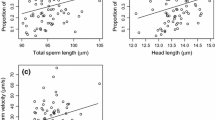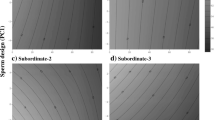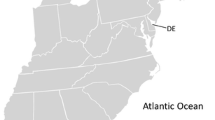Abstract
Sperm morphometry and motility are important male traits affecting fertility and post-copulatory competitive ability. However, studies examining consistency in sperm traits over time for individual males are rather scarce, particularly in free-living animals. Here, we report our analysis of various measures of sperm morphometry and sperm motility in the Barn Swallow (Hirundo rustica), both within and between breeding seasons. We found high within-season repeatabilities for all measures of sperm morphometry (all r > 0.70) and moderate repeatability of sperm motility (all r > 0.42). Between seasons, repeatabilities were somewhat lower, but total sperm length and flagellum length also showed very high repeatabilities between seasons (r > 0.85). Furthermore, sperm motility showed higher repeatabilities between seasons than within a season (all r > 0.63). Although measures of sperm motility are likely to be more plastic due to, for example, changes in body condition, they still showed moderate repeatabilities within and between seasons. Our study results also imply that a single ejaculate would be sufficient to obtain representative measures of an individual’s sperm quality traits within the same breeding season.
Zusammenfassung
Reproduzierbarkeit von Spermiengröße und -beweglichkeit bei der Rauchschwalbe ( Hirundo rustica ) innerhalb der Brutsaison und zwischen verschiedenen Brutjahren
Spermienmorphometrie und -beweglichkeit sind wichtige Merkmale, die bei Männchen die Fruchtbarkeit und die postkopulatorische Konkurrenzfähigkeit bestimmen. Allerdings sind Studien, welche die zeitliche Kontinuität der Spermieneigenschaften einzelner Männchen untersuchen, dünn gesät, besonders für wildlebende Tiere. Hier analysieren wir verschiedene Messgrößen der Spermienmorphometrie und -beweglichkeit bei Rauchschwalben (Hirundo rustica), sowohl innerhalb derselben Brutsaison als auch zwischen mehreren Brutjahren. Innerhalb einer Brutsaison ergab sich eine hohe Reproduzierbarkeit aller Messgrößen der Spermienmorphometrie (alle r > 0,70) und eine mäßige Reproduzierbarkeit hinsichtlich der Spermienbeweglichkeit (alle r > 0,42). Die Reproduzierbarkeit von einer Brutsaison zur anderen war etwas geringer, allerdings zeigten Spermien-Gesamtlänge sowie Geißellänge ebenfalls hohe Reproduzierbarkeit zwischen den Jahren (r > 0,85). Des Weiteren lag die Reproduzierbarkeit für die Spermienbeweglichkeit im Vergleich der Jahre über der innerhalb einer Brutsaison (alle r > 0,63). Die Werte für die Spermienbeweglichkeit sind wahrscheinlich plastischer, beispielsweise aufgrund von Änderungen in der Kondition, zeigten aber dennoch mäßige Reproduzierbarkeit innerhalb einer Brutsaison und zwischen den Jahren. Außerdem legt unsere Studie nahe, dass vermutlich bereits ein einziges Ejakulat genügt, um zu repräsentativen Messwerten für die Spermienqualität eines Individuums innerhalb einer Brutsaison zu gelangen.



Similar content being viewed by others
References
Aire TA (2007) Spermatogenesis and testicular cycles. In: Jamieson BGM (ed) Reproductive biology and phylogeny of birds, vol 6A. Science Publishers, Enfield, pp. 279–347
Baer B, de Jong G, Schmid-Hempel R, Schmid-Hempel P, Høeg JT, Boomsma JJ (2006) Heritability of sperm length in the bumblebee Bombus terrestris. Genetica 127:11–23
Birkhead TR, Fletcher F (1995) Male phenotype and ejaculate quality in the Zebra Finch Taeniopygia guttata. Proc R Soc Lond B 262:329–334
Birkhead TR, Martinez JG, Burke T, Froman DP (1999) Sperm mobility determines the outcome of sperm competition in the domestic fowl. Proc R Soc Lond B 266:1759–1764
Birkhead TR, Pellatt EJ, Brekke P, Yeates R, Castillo-Juarez H (2005) Genetic effects on sperm design in the Zebra Finch. Nature 434:383–387
Boake CRB (1989) Repeatability: its role in evolutionary studies of mating behavior. Evol Ecol 3:173–182
Calhim S, Immler S, Birkhead TR (2007) Postcopulatory sexual selection is associated with reduced variation in sperm morphology. PLoS ONE 2:e413
Cohen J (1977) Reproduction. Butterworths, London
Cramer ERA, Laskemoen T, Kleven O, Lifjeld JT (2013) Sperm length variation in House Wrens Troglodytes aedon. J Ornithol 154:129–138
Denk AG, Holzmann A, Peters A, Vermeirssen ELM, Kempenaers B (2005) Paternity in mallards: effects of sperm quality and female sperm selection for inbreeding avoidance. Behav Ecol 16:825–833
Deviche P, Wingfield JC, Sharp PJ (2000) Year–class differences in the reproductive system, plasma prolactin and corticosterone concentrations, and onset of prebasic molt in male dark-eyed juncos (Junco hyemalis) during the breeding period. Gen Comp Endocrinol 118:425–435
Donoghue AM, Sonstegard TS, King LM, Smith EJ, Burt DW (1999) Turkey sperm mobility influences paternity in the context of competitive fertilization. Biol Reprod 61:422–427
Evans MR, Goldsmith AR (2000) Male wrens with large testes breed early. Anim Behav 60:101–105
Froman DP, Feltmann AJ, Rhoads ML, Kirby JD (1999) Sperm mobility: a primary determinant of fertility in the domestic fowl (Gallus domesticus). Biol Reprod 61:400–405
Gage MJG (1998) Mammalian sperm morphometry. Proc R Soc Lond B 265:97–103
Gage MJG, Macfarlane CP, Yeates S, Ward RG, Searle JB, Parker GA (2004) Spermatozoal traits and sperm competition in Atlantic salmon: relative sperm velocity is the primary determinant of fertilization success. Curr Biol 14:44–47
Graves GR (2004) Testicular volume and asymmetry are age-dependent in black-throated blue warblers (Dendroica caerulescens). Auk 121:473–485
Helfenstein F, Losdat S, Møller AP, Blount JD, Richner H (2010) Sperm of colorful males are better protected against oxidative stress. Ecol Lett 13:213–222
Helfenstein F, Szép T, Nagy Z, Kempenaers B, Wagner RH (2008) Between-male variation in sperm size, velocity and longevity in Sand Martins Riparia riparia. J Avian Biol 39:649–652
Immler S, Calhim S, Birkhead TR (2008) Increased postcopulatory sexual selection reduces the intramale variation in sperm design. Evolution 62:1538–1543
Immler S, Pryke SR, Birkhead TR, Griffith SC (2010) Pronounced within-individual plasticity in sperm morphometry across social environments. Evolution 64:1634–1643
Jamieson BGM (2007) Avian spermatozoa: structure and phylogeny. In: Jamieson BGM (ed) Reproductive biology and phylogeny of birds. Science Publishers, Enfield, pp 349–511
Kleven O, Jacobsen F, Robertson RJ, Lifjeld JT (2005) Extrapair mating between relatives in the barn swallow: a role for kin selection? Biol Lett 1:389–392
Kleven O, Jacobsen F, Izadnegahdar R, Robertson RJ, Lifjeld JT (2006) Male tail streamer length predicts fertilization success in the North American barn swallow (Hirundo rustica erythrogaster). Behav Ecol Sociobiol 59:412–418
Kleven O, Laskemoen T, Fossøy F, Robertson RJ, Lifjeld JT (2008) Intraspecific variation in sperm length is negatively related to sperm competition in passerine birds. Evolution 62:494–499
Kleven O, Fossøy F, Laskemoen T, Robertson RJ, Rudolfsen G, Lifjeld JT (2009) Comparative evidence for the evolution of sperm swimming speed by sperm competition and female sperm storage duration in passerine birds. Evolution 63:2466–2473
Koehler LD (1995) Diversity of avian spermatozoa ultrastructure with emphasis on the members of the order Passeriformes. Mém Mus Natl Hist Nat 166:437–444
LaMunyon CW, Ward S (1998) Larger sperm outcompete smaller sperm in the nematode Caenorhabditis elegans. Proc R Soc Lond B 265:1997–2002
Laskemoen T, Kleven O, Fossøy F, Lifjeld JT (2007) Intraspecific variation in sperm length in two passerine species, the bluethroat Luscinia svecica and the willow warbler Phylloscopus trochilus. Ornis Fenn 84:131–139
Laskemoen T, Fossøy F, Rudolfsen G, Lifjeld JT (2008) Age-related variation in primary sexual characters in a passerine with male age-related fertilization success, the bluethroat Luscinia svecica. J Avian Biol 39:322–328
Laskemoen T, Kleven O, Fossøy F, Robertson JR, Rudolfsen G, Lifjeld JT (2010) Sperm quantity and quality effects on fertilization success in a highly promiscuous passerine, the tree swallow Tachycineta bicolor. Behav Ecol Sociobiol 64:1473–1483
Laskemoen T, Albrecht T, Bonisoli-Alquati A, Cepak J, De Lope F, Hermosell IG, Johannessen LE, Kleven O, Marzal A, Mousseau TA, Møller AP, Robertson RJ, Rudolfsen G, Saino N, Vortman Y, Lifield JT (2013) Variation in sperm morphometry and sperm competition among Barn Swallow (Hirundo rustica) populations. Behav Ecol Sociobiol 67:301–309
Lifjeld JT, Laskemoen T, Kleven O, Albrecht T, Robertson RJ (2010) Sperm length variation as a predictor of extrapair paternity in passerine birds. PLoS ONE 5:e13456
Lifjeld JT, Kleven O, Jacobsen F, McGraw KJ, Safran RJ, Robertson RJ (2011) Age before beauty? Relationships between fertilization success and age-dependent ornaments in Barn Swallows. Behav Ecol Sociobiol 65:1687–1697
Locatello L, Rasotto MB, Evans JP, Pilastro A (2006) Colorful male guppies produce faster and more viable sperm. J Evol Biol 19:1595–1602
Lombardo MP, Green ML, Thorpe PA, Czarnowski MR, Power HW (2004) Repeated sampling affects tree swallow semen characteristics. J Field Ornithol 75:394–403
Losdat S, Richner H, Blount JD, Helfenstein F (2011) Immune activation reduces sperm quality in the Great Tit. PLoS ONE 6:e22221
Lüpold S, Birkhead TR, Westneat DF (2012) Seasonal variation in ejaculate traits of male Red-Winged Blackbirds (Agelaius phoeniceus). Behav Ecol Sociobiol 66:1607–1617
Lüpold S, Linz GM, Rivers JW, Westneat DF, Birkhead TR (2009) Sperm competition selects beyond relative testes size in birds. Evolution 63:391–402
Malo AF, Garde JJ, Soler AJ, Garcia AJ, Gomendio M, Roldan ERS (2005a) Male fertility in natural populations of Red Deer is determined by sperm velocity and the proportion of normal spermatozoa. Biol Reprod 72:822–829
Malo AF, Roldan ERS, Garde J, Soler AJ, Gomendio M (2005b) Antlers honestly advertise sperm production and quality. Proc R Soc Lond B 272:149–157
McFarlane RW (1963) The taxonomic significance of avian sperm. Proc 13th Int Ornihol Congr 1:91–102
Morrow EH, Gage MJG (2001a) Artificial selection and heritability of sperm length in Gryllus bimaculatus. Heredity 87:356–362
Morrow EH, Gage MJG (2001b) Consistent significant variation between individual males in spermatozoal morphometry. J Zool Lond 254:147–153
Mossman J, Slate J, Humphries S, Birkhead TR (2009) Sperm morphology and velocity are genetically codetermined in the zebra finch. Evolution 63:2730–2737
Møller AP (1994) Sexual selection and the barn swallow. Oxford University Press, Oxford
Møller AP, Mousseau TA, Lynn C, Ostermiller S, Rudolfsen G (2008) Impaired swimming behaviour and morphology of sperm from Barn Swallows Hirundo rustica in Chernobyl. Mutat Res Genet Toxicol Environ Mutagen 650:210–216
Møller AP, Mousseau TA, Rudolfsen G, Balbontin J, Marzal A, Hermosell I, De Lope F (2009) Senescent sperm performance in old male birds. J Evol Biol 22:334–344
Nakagawa S, Schielzeth H (2010) Repeatability for Gaussian and non-Gaussian data: a practical guide for biologists. Biol Rev 85:935–956
Napier RAN (1961) Fertility in the rabbit III. Estimation of spermatozoan quality by mixed inseminations, and the inheritance of spermatozoan characters. J Reprod Fertil 2:273–289
Pitcher TE, Rodd FH, Rowe L (2007) Sexual colouration and sperm traits in guppies. J Fish Biol 70:165–177
Pizzari T, Cornwallis CK, Froman DP (2007) Social competitiveness associated with rapid fluctuations in sperm quality in male fowl. Proc R Soc Lond B 274:853–860
R Development Core Team (2009) R: a language and environment for statistical computing. R Foundation for Statistical Computing, Vienna
Radwan J (1996) Intraspecific variation in sperm competition success in the bulb mite: a role for sperm size. Proc R Soc Lond B 263:855–859
Rudolfsen G, Figenschou L, Folstad I, Tveiten H, Figenschou M (2006) Rapid adjustments of sperm characteristics in relation to social status. Proc R Soc Lond B 273:325–332
Rudolfsen G, Figenschou L, Folstad I, Kleven O (2008) Sperm velocity influence paternity in the Atlantic cod (Gadus morhua L.). Aquac Res 39:212–216
Schmoll T, Kleven O (2011) Sperm dimensions differ between two coal tit Periparus ater populations. J Ornithol 152:515–520
Serrano JV, Folstad I, Rudolfsen G, Figenschou L (2006) Do the fastest sperm within an ejaculate swim faster in subordinate than in dominant males of Arctic char? Can J Zool 84:1019–1024
Turner AK (2006) The barn swallow. T. & A. D Poyser, London
Urbach D, Bittner D, Lenz TL, Bernet D, Wahli T, Wedekind C (2007) Sperm velocity in an Alpine Whitefish: effects of age, size, condition, fluctuating asymmetry and gonad abnormalities. J Fish Biol 71:672–683
Ward PI (1998) Intraspecific variation in sperm size characters. Heredity 80:655–659
Ward PI (2000) Sperm length is heritable and sex-linked in the yellow dung fly (Scathophaga stercoraria). J Zool Lond 251:349–353
Wolfson A (1952) The cloacal protuberance: a means for determining breeding condition in live male passerines. Bird Band 23:159–165
Woolley DM, Beatty RA (1967) Inheritance of midpiece length in mouse spermatozoa. Nature 215:94–95
Acknowledgments
We thank Trond Øigarden for field assistance, Diana and Bob Trainor for kindly giving us access to their property, the Ontario Ministry of Transportation for allowing us to work in one of their sand sheds and the staff at Queen’s University Biological Station for logistic support during the field season. This work was funded by a research grant from the Research Council of Norway (to JTL) and a research grant from the Natural Sciences and Engineering Research Council of Canada (to RJR). The research conforms to the legal requirements of Canada and was approved by the Canadian Wildlife Service (permit no. CA 0121) and Queen’s University Animal Care Committee (protocol no. RobertsonRJ-2003-003-R3).
Author information
Authors and Affiliations
Corresponding author
Additional information
Communicated by L. Fusani.
Rights and permissions
About this article
Cite this article
Laskemoen, T., Kleven, O., Johannessen, L.E. et al. Repeatability of sperm size and motility within and between seasons in the Barn Swallow (Hirundo rustica). J Ornithol 154, 955–963 (2013). https://doi.org/10.1007/s10336-013-0961-4
Received:
Revised:
Accepted:
Published:
Issue Date:
DOI: https://doi.org/10.1007/s10336-013-0961-4




